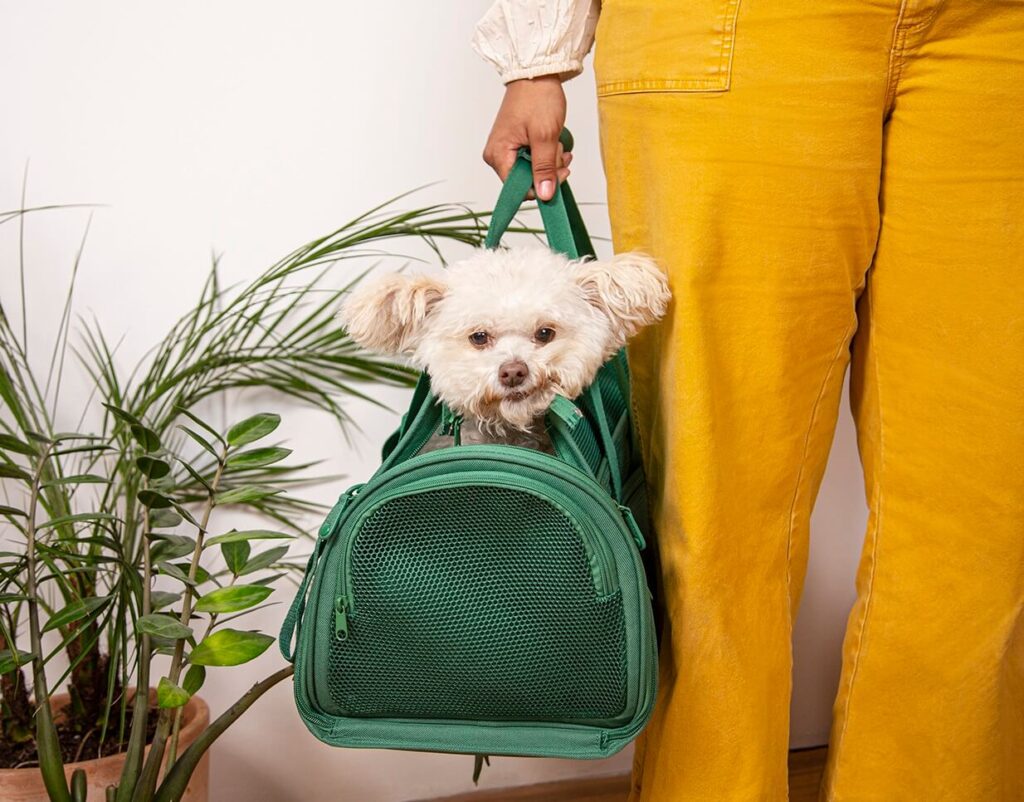Whether you’re moving with your cat or taking your dog to the vet, transporting pets can be tricky business. Many pets don’t like being removed from their comfort zone and will vocally express their dissatisfaction. Others might get motion sickness or severe anxiety in moving vehicles. These Fear Free-approved tips can make car traveling easier for your pet and you.
- Pet carriers and crates are the safest option.
Keeping cats and dogs contained in a carrier and/or crate ensures they’re not injured if you’re in an accident or need to make a hard stop. Look for dog crates that can be secured to the seat. You can use the seat belt to hold a cat carrier in place to prevent too much movement. (Here’s a guide to getting your cat into their carrier without too much stress!) - Keep cats and dogs in the back seat.
Your trusty co-pilot belongs in the back seat where an airbag won’t injure them if you happen to be in an accident. - Consider medication.
Some pets who get anxious in the car may benefit from anti-anxiety medication or a mild sedative prescribed by your veterinarian. Additionally, there are also over-the-counter nutraceuticals that can help for more milder cases. CBD is a natural option that may have calming effects on pets. There may be some variability between individuals in how they react to these medications, so its always a good idea to try them out at home prior to the day of your vet visit. Some pets also can get car sick! Typically these pets will vomit or drool excessively. If this is the case, your veterinarian may recommend anti-nausea medication for car rides.
As always, talk to your veterinarian before giving your pet a sedative or supplement. - Make time for potty breaks.
Avoid an accident in the car with frequent potty breaks at rest stops with designated dog areas. On long car journeys, dogs will appreciate a stop here and there to relieve themselves and stretch their legs. Cats should have an easily accessible litter box, such as one that’s built into a cat crate. Make sure you’re using an odor-absorbing litter to keep the car ride pleasant for everyone! - Pack a bag with pet essentials.
For shorter trips, you might want to bring along things like their favorite treats or a toy. A piece of clothing that smells like you (or is sprayed with calming pheromones) can soothe travel anxiety too. For longer trips, you’ll want to bring food, a water bowl, a toy, a litter box, doggie bags, leashes/collars, etc. We created a helpful checklist (one for cats and one for dogs) to prepare for a vet visit. - Get pets microchipped for peace of mind.
This tiny chip the size of a grain of rice will come to the rescue if your pet ever gets lost! Stuff can happen, especially in the midst of moving or in an unfamiliar place, and a microchip can help you be reunited with your best friend. - Never leave your pet unattended in a car.
Here’s a reminder to never leave your pet in the car alone. Cars can get hot in the summer, putting your pet at risk for overheating. If you do need to leave them in the car, have a family member stay behind with them and provide a bowl of water.
With patience, the right tools, your pet and you have smooth travels ahead. If you need additional guidance on traveling with pets, don’t hesitate to reach out and book an appointment with our veterinarians at Papaya Veterinary Care.
The information in this blog is reviewed and approved by the veterinarians at Papaya Veterinary Care.

